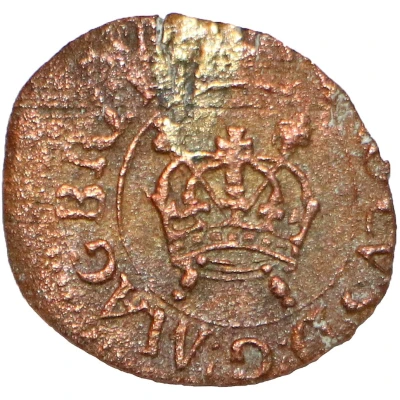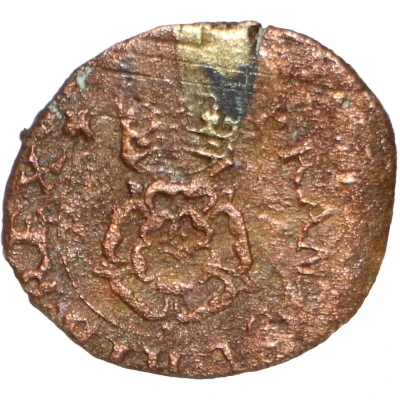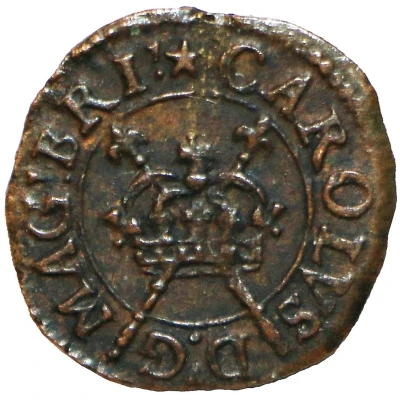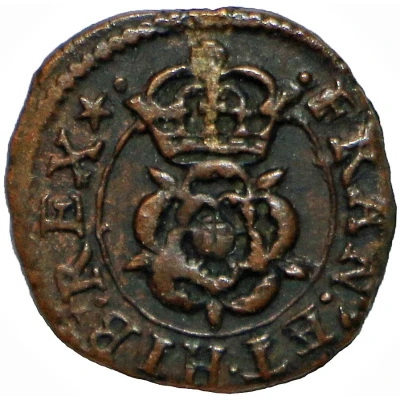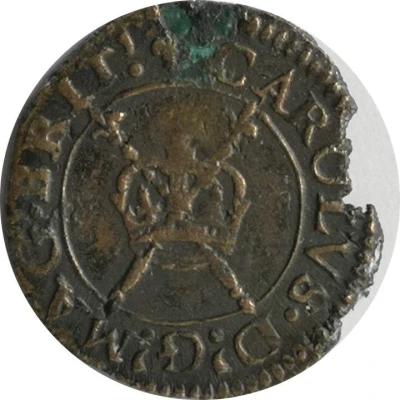
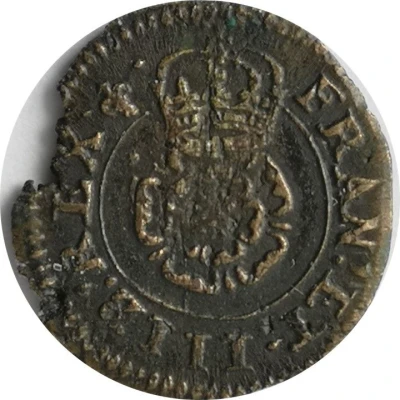

© Stewartdiver
1 Farthing - Charles I Rose issue; type 2 ND
1636 year| Copper (with brass wedge) | 0.8 g | 14 mm |
| Issuer | England (United Kingdom, British Overseas Territories and Crown Dependencies) |
|---|---|
| King | Charles I (1625-1649) |
| Type | Token |
| Year | 1636 |
| Value | 1 Farthing (1⁄960) |
| Currency | Pound sterling (1158-1970) |
| Composition | Copper (with brass wedge) |
| Weight | 0.8 g |
| Diameter | 14 mm |
| Shape | Round (irregular) |
| Technique | Hammered |
| Orientation | Medal alignment ↑↑ |
| Demonetized | Yes |
| Updated | 2024-10-08 |
| Numista | N#340623 |
|---|---|
| Rarity index | 94% |
Reverse
Crowned Tudor rose, two layers of petals, remainder of royal title around.
Script: Latin
Lettering: FRAN! ET· HIB: REX·
Unabridged legend: Franciae Et Hiberniae Rex
Translation: King of France and Ireland
Comment
House of Stuart (1603-49), Charles I (1625-49), copper Rose farthing, type 2 (1636-43).There are legend variants with HIBER and IIIB instead of HIB. There are also irregular varieties where CAR or CARO appear between the sceptres on the obverse, starting at 10 o'clock. The CARO variety also has HIBER instead of HIB.
In 1636, directions were given to Lord Maltravers and Sir Francis Crane “to make a new sort of farthing token which should have a little brass in the middle of the copper to distinguish the true farthings from forgeries.” The harp on the reverse was replaced by a rose, hence these pieces are known as the Rose farthings, and are the last made under the patent of Charles I, which was abolished during the interregnum.
Interesting fact
One interesting fact about the Token 1 Farthing - Charles I (Rose issue; type 2) ND (1636) from England is that it was made with a unique combination of copper and brass. The coin features a brass wedge, which was used to prevent counterfeiting and to ensure the coin's authenticity. This feature is particularly interesting because it showcases the innovative techniques used by mint officials during that time period to combat counterfeiting. Additionally, the fact that the coin is made of copper and brass also highlights the resourcefulness of the mint officials in using a combination of metals to create a durable and secure coin.
